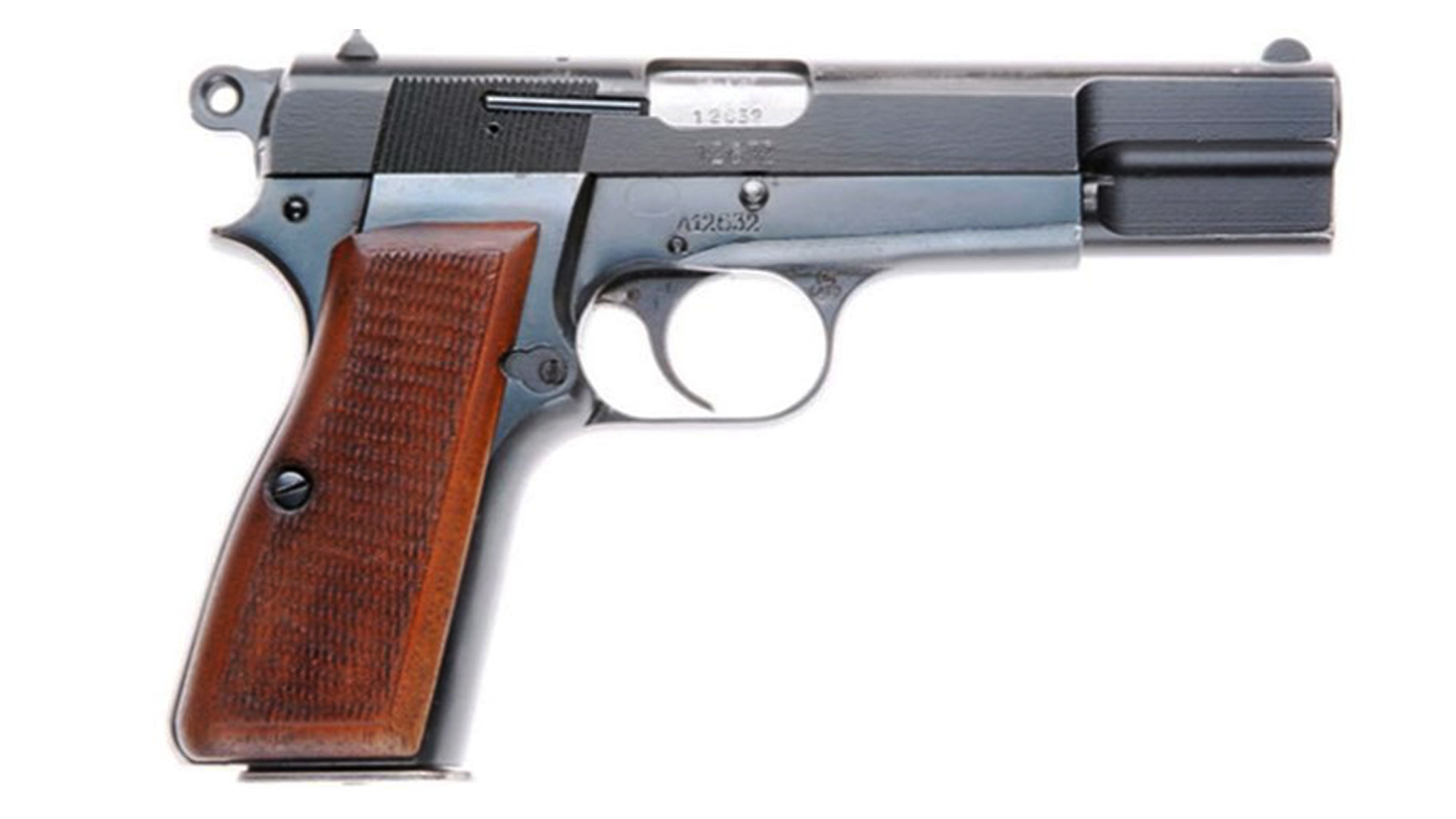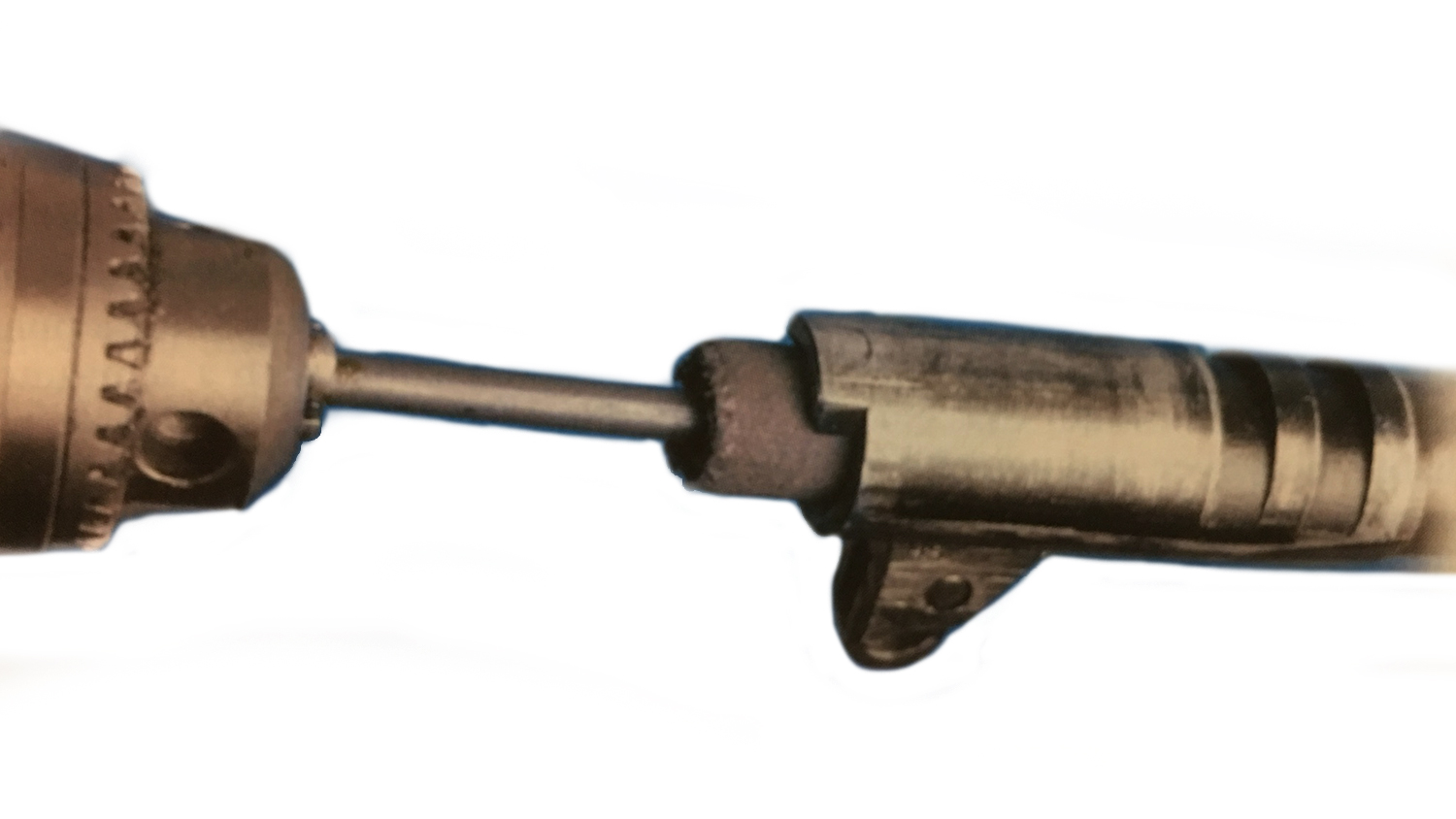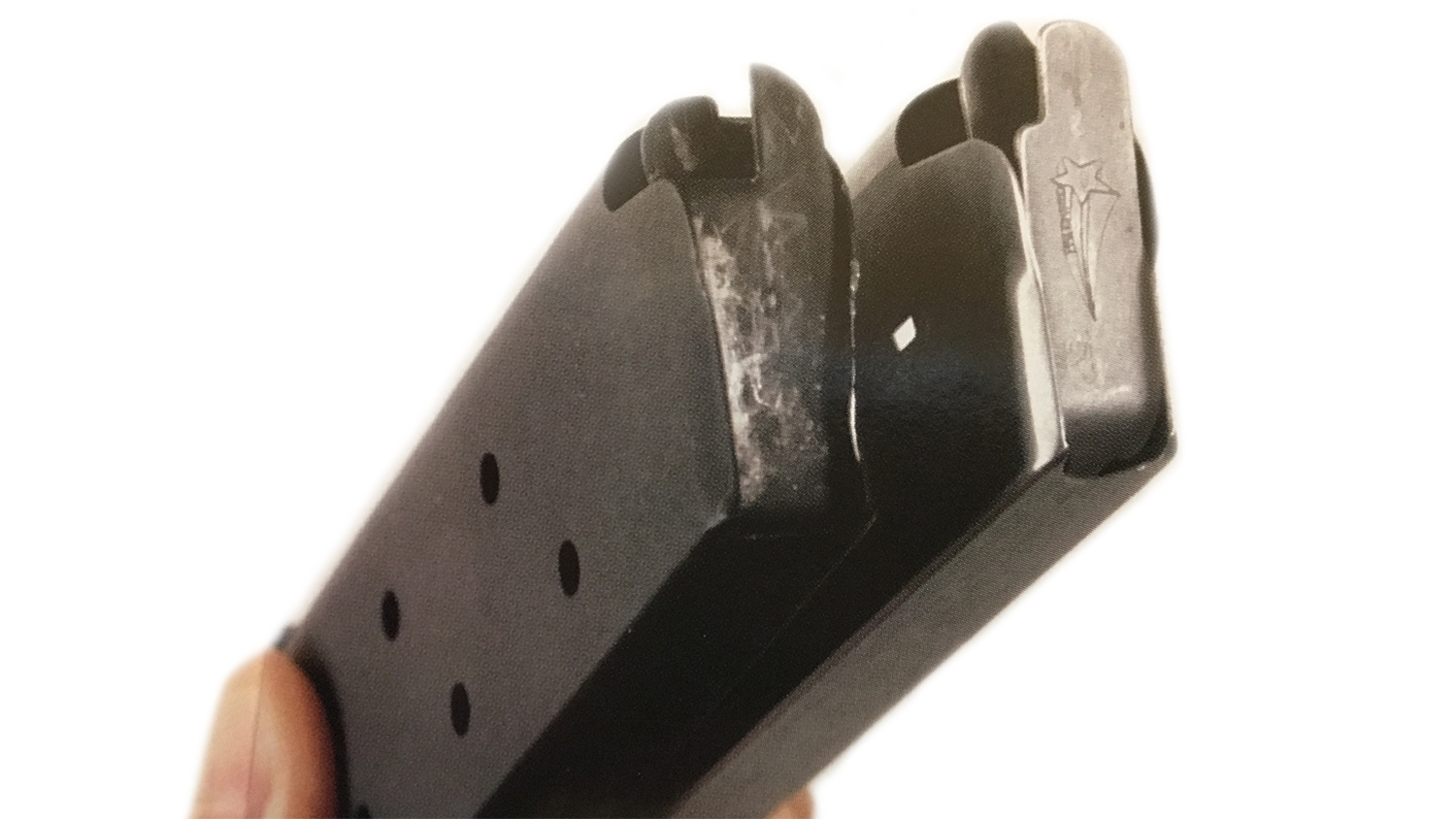Automatic Shotgun Feeds Two Shells Into Receiver Causing It to Jam
At one time, semi-automatic pistols were considered by many gun experts to be complicated and undependable. That's no longer the case. Improvements in both guns and ammunition have made it commonplace for a stock high-quality semi-auto to fire hundreds of rounds without a hitch, right out of the box.
However, even with these advances, semi-autos still occasionally have reliability problems, which fall into a number of different categories. One of the most prevalent types of malfunctions is a failure to feed.
A failure to feed occurs when, on the slide's forward stroke, the cartridge in the magazine does not full enter the chamber and the gun does not go into battery. There are three general types of failures to feed —nosedive jams, half-in, half-out jams, and failure to go fully into battery—each with its own distinctive causes and cures. Nosedive Jams Nosedives may also be caused by a rough or improperly shaped feed ramp. Some defects—such as a ramp that is funneled rather than straight—are typically the result of inept modification, but even a factory-original feed ramp can sometimes be improved. The slightly convex factory ramps on older Browning Hi-Power barrels, for example, are normally straightened by professional pistolsmiths to improve feeding with modern hollow-points.
In the nosedive jam, the nose of the top round in the magazine becomes stuck on the bottom of the feed ramp, preventing the slide from moving forward. Nosedives result from the tendency of the cartridge nose to go down when the slide hits the top edge of the cartridge rim. Usually this can be corrected with a stiffer magazine spring and a well-designed follower. Magazines with weak springs or poorly-designed followers should be replaced.

Older Browning Hi-Power barrels are normally straightened by professional pistolsmiths to improve feeding with modern hollow-points.
Diagnosing and correcting improper feed ramp shape is best left to a professional, but you can polish your own feed ramp, if you're careful. Wrap some 1200-grit (or finer) abrasive paper around a dowel of the proper diameter to match the curve of the ramp's trough, and polish in an up-and-down direction. Hold the paper flat against the ramp; don't round the ramp at the top or bottom, and don't try to take out all the scratches in the ramp. The objective is just to polish, not to remove metal. A gun that still nosedives even after you've changed magazines, changed ammunition, and polished the feed ramp should receive the attention of a professional gunsmith. Half-In, Half-Out Jams Most modern semi-autos incorporate the feed ramp into the barrel. With those pistols having the feed ramp in the frame (like a 1911), the barrel must have a properly polished and proportioned funnel, or "throat," at the mouth of the chamber for reliable feeding to occur. This throat must not overhang the frame feed ramp. Generally, because the depth of the throat determines how much support the barrel gives the case head, throating a barrel should be left to a professional gunsmith. Half-in, half-out jams can also be caused by the lack of a tiny radius at the junction of the feed ramp (or throat) and the chamber. This radius is necessary to allow the cartridge, which starts into the chamber at an angle, to "turn the corner" to align itself with the bore and fully enter the chamber. Most—but not all—factory barrels have a sufficient radius. But many match-grade aftermarket barrels do not. You can produce such a radius by very careful use of a Dremel tool with a Craytex or other abrasive-impregnated tip. Don't use a grinding stone tip; it cuts too quickly for proper control and leaves a rough finish. As with any gunsmithing project, less is more. Remove as little metal as possible, just enough to give a hint of radius. A chamber that is excessively dirty, rough or undersized (as when it is cut with a worn or improperly reground chamber reamer) may also cause half-in, half-out jams. A too-tight chamber can be diagnosed by removing the barrel and inserting live factory rounds or a headspace gauge into the chamber, while a rough chamber can be detected by simple visual inspection.
Half-in, half-out jams occur when the cartridge becomes wedged partly in the chamber at an angle. A rough feed ramp can contribute to these jams, but they are more commonly related to a rough breechface, an extractor that has too much tension, or a sharp edge where the cartridge rim slides under its claw. Often this is diagnosed by a nick or gouge on the rim of a spent case. Extractor shaping and adjustment is usually a pro's chore, but you can polish your own breechface with a fine-grained flat stone or 1200-grit abrasive paper wrapped around a flat stone. Again, the objective is just to polish, not to remove any metal.

A polishing spud using 1200-grit or finer abrasive paper can be used to polish a chamber.
You can polish your own chamber with a polishing spud, if you are careful. Put the barrel in your vise between padded jaws, with the chamber end facing you. Take a 3/16- to 1/4-inch diameter brass or steel rod about four inches long, mount one end in the chuck of an electric drill, and wrap the other end with a one- to 1 1/2-inch wide strip of 1200-grit (or finer) abrasive paper. The strip should be just long enough to give you a tightly wound cylinder that will barely enter the chamber. Insert the cylinder until it contacts the shoulder inside the chamber, and mark the rod where it is even with the chamber mouth. Finally, remove the spud, fire up the drill and carefully insert the rotating spud into the chamber (being careful not to go beyond your witness mark on the rod). If your spud is the correct diameter, you should feel some resistance as it is inserted. Don't dally—only two or three seconds is needed with the spud completely inserted. Any longer and you can run the risk of enlarging the chamber. Failure To Go Fully Into Battery Insufficient headspace can also prevent the slide from going completely into battery, although that condition is rare with stock barrels in factory guns. Tightly fitted match pistols with minimum-length chambers, however, are quite sensitive to any condition that effectively makes the cartridge too long for the chamber. To check for insufficient headspace, remove the barrel from the pistol and drop a live round into it. Look to see if the round protrudes beyond the edge of the hood or breechface (depending upon design). Alternatively, with the gun assembled, insert a "go" headspace gauge into the chamber. If the slide fails to go fully into battery on the "go" gauge, you probably don't have enough headspace. Fortunately, it's an easy job for a gunsmith to recut your chamber to the correct length. Finally, all of the above types of failures to feed can be caused by anything that prevents the slide from going forward with sufficient force to strip a round from the magazine and push it into the chamber. This would include a weak recoil spring, a slide that does not run freely on the frame rails, or a too-tightly fitted barrel. Magazine-Related Problems
A third kind of failure to feed might be known simply as failure to go fully into battery. This describes a condition in which the slide does not go fully forward into lockup even though the cartridge is aligned with, and is almost completely inside, the chamber. This can be caused by the same conditions mentioned above—a dirty, rough or undersized chamber—but is usually caused by reloads that are too large because of oversize bullets or that have an insufficient taper crimp. In my experience, an improper crimp is the number one cause of ammunition-related feeding malfunctions.
The magazine is the weak link in any semi-automatic design, and it can cause unreliable feeding in several ways. For example, a magazine may have deformed lips that release the cartridge too soon, too late, or at the wrong angle. It may also have defects that increase the force required to strip off the next cartridge, such as an excessively strong magazine spring, sharp-edged lips that dig into the cartridge case, or a rough, bent or poorly-designed follower. Also, a magazine may sit so high in the frame that it rubs the slide and inhibits free slide travel. This is usually revealed by blueing wear or rub marks on the magazine.

The older 1911 G.I. magazine (left) is more likely to fail than the newer one.
Feeding problems may also arise when the magazine has excessive up-and-down play, or magazine float. A little magazine float is inevitable and even necessary, but excessive float (more than about .050 inch) may let the magazine sit too low in the gun relative to the feed ramp and chamber, contributing to nosedive jams and other feeding problems. (All else being equal, the closer the top round in the magazine is to the bore axis, the more reliable it will feed.) Switching magazines or ammunition, or replacing a worn or out-of-spec magazine catch can sometimes cure this problem. On rare occasions, it may be necessary to install a magazine catch that holds the magazine slightly higher in the gun. Sometimes it must seem as though feeding problems are lurking around every corner. In reality, changing magazines and/or ammo, and performing a little judicious polishing here and there, will cure about 90 percent of feed-related bobbles. A professional gunsmith can usually easily rectify the remaining 10 percent.
Source: https://www.ssusa.org/content/a-failure-to-feed-semi-autos/
0 Response to "Automatic Shotgun Feeds Two Shells Into Receiver Causing It to Jam"
Post a Comment